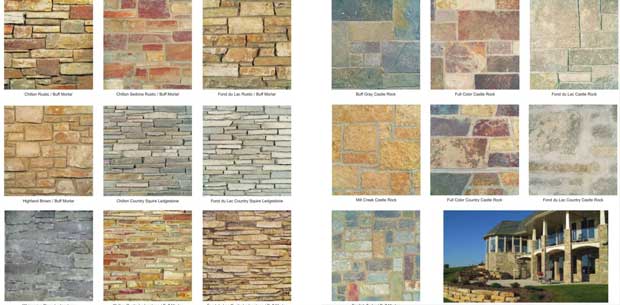
Building stones are the naturally occurring massive, dense rock which can be cut or shaped into blocks or slabs for use in wall, paving, roofing materials or other construction works. They have been used as building material since very early period of our civilization. Be it igneous, metamorphic or sedimentary, a building stone is chosen for its use, durability, attractiveness, economy or other properties as desired. Some of the common building stones are Granite, Basalt, Slate, Gneiss, etc. which are discussed below:
Common Building Stones
1. Granite
- Classification: Igneous, siliceous variety
- Composition: Quartz, feldspar and mica (Granite containing high percentage of quartz is very refractory; as the proportion of quartz decreases as that of feldspar increases, the stone becomes easier to work with).
- Characteristics:
- Specific gravity: 2.64 and absorption less than 1%
- Crushing strength: 110 to 140 MN/m2.
- Colour depends upon that of feldspar and may be brown/ grey/ green or pink.
Uses:
- ornamental columns/plinths;
- construction of sea walls, bridge piers;
- large pieces are used as building blocks;
- smaller pieces as road metals or railway ballast;
- chippings are used for the manufacture of concrete or artificial stones.
- may be used as damp-proof course and external cladding of walls.
2. Basalt or trap
- Classification: Igneous, siliceous variety
- Composition: Silica alumina and feldspar
- Characteristics:
- Crushing strength 70 to 80 MN/m2
- Specific gravity = 2.96
- Basalt is rough, lightweight and grey to black in colour.
- It has good sound absorption and insulation; heat insulation and heat reserve capacities.
- It is environmentally green building material. Basalt is acid and alkali resistant.
Uses:
- Suitable for paving sets and as road metal
- Used for manufacture of artificial stones
- Used as aggregate in concrete
3. Slate
- Classification: Metamorphic rock formed from shale (Argillaceous variety)
- Composition: Alumina mixed with sand or carbonate of lime
- Characteristics:
- Specific gravity = 2.8
- It can be split into thin sheets
- Crushing strength 60 to 70 MN/m2
- It is non-absorbent
- Sheets of slate are strong under transverse loading and quite impervious to water hence they make ideal good roof covering.
Uses:
- For making electrical switch boards
- Suitable for use in cisterns, urinal partitions etc.
- Can be set into walls to provide a rudimentary damp-proof membrane.
4. Gneiss
- Classification: Metamorphic rock, sometimes called stratified or bastard granite with somewhat laminated structure. Syenite is a rock similar to granite but composed mainly of feldspar instead of quartz.
- Composition: Quartz and feldspar
- Characteristics:
- can be readily split into slabs
- is more easily worked than granite.
Uses:
- For street paving
5. Sandstone
- Classification: Sedimentary rock (Siliceous variety)
- Composition: Quartz and/or feldspar cemented by lime, mica, magnesium, aluminium, oxide or iron or by a mixture of these materials. Sometimes fragments of limestone, mica or feldspar are also present.
- Characteristics:
- Specific gravity = 2.25
- Crushing strength = 35 to 40 MN/m2
- Flagstone: sandstone of thin-bedded variety
- Grit: rock composed of angular sharp edged sand grains
- Free stone: sandstone that can be cut easily with mallet and hammer into blocks for building
- Durability of sandstone depends upon the nature of cementing material. The quality of sandstone is poor if it is porous or contains lime or clay.
- Sandstones are generally weak in abrasion.
- They hold considerable water and allow percolation through them.
Uses:
- Fine grained are used for ashlar work, mouldings, carvings etc.
- Rough and coarse grained are used for rubble work; for slabs and tiles.
6. Limestone
- Classification: Sedimentary rock of calcareous variety.
- Composition: Pure state contains CaCO3 but frequently mixed with MgCO3 and small amount of silica and alumina. Limestones containing 10% or more of magnesia are called as magnesian and those having over 45% of it are termed as dolomites.
- Characteristics:
- Specific gravity = 2.6
- Crushing strength = 52 MN/m2
Uses:
- in blast furnaces, bleaching and tanning industries
- for stone masonry for walls and paving set in floors
- for manufacturing lime and cement
- quarry waste is used as road metal
7. Marble
- Classification: Metamorphic rock (changed from limestone or dolomite) of calcareous variety.
- Composition: CaCO3 is the main constituent.
- Characteristics:
- Specific gravity: 2.72
- Crushing strength 50 to 60 MN/m2
Uses:
- for carving and decoration works
- for steps, wall linings, electrical switch boards, table slabs and columns.
8. Quartzite
- Classification: Metamorphic rock of siliceous variety originally sandstone.
- Composition: Silica
- Characteristics:
- Dense, hard and glassy structure.
- Highly resistant to chemical weathering.
- Orthoquartzite is very pure quartz sandstone, often 99% SiO2.
Uses:
- as road metal/ railway ballast
- in concrete
- in rubble masonry
- for heavy construction like retaining walls, bridge piers, dams etc.
9. Kankar
It is an impure limestone containing 30% of clay and sand available in grey or khaki colour and have porous structure.
Uses:
- for preparing hydraulic lime
- as road metal
- in foundations of buildings
10. Laterite
- Sedimentary, argillaceous rock of Sp. gr. = 2.2
- It is a material of low compressive strength of 2 to 4 MPa.
- It is sandy claystone containing high percentage of iron oxide.
- A calcareous laterite with lime content called kankar.
Uses: as building stones; as road metal.
11. Moorum
It is a decomposed laterite.
Uses:
- for surfacing fancy paths and garden walks (due to its rich red colour)
- it serves as a fine blindage for metalled rods.
12. Gravel
It is a mixture of rounded water worn pebbles of any kind of stone with sand.
13. Chalk
It is pure, white limestone. It is used for manufacture of Portland cement and for marking and as a colouring matter.it is unsuitable for building purposes.
14. Shingles
Broken shingles are used in concrete and as road metal or railway ballast or in concrete.
Characteristics of good building stones
Some of the characteristics or properties of good building stones are as follows:
- Appearance and colour: Stones with much iron should be discouraged as the formation of iron oxides disfigures them and brings about disintegration.
- Weight: Building stones must be heavy
- Porosity and absorption: Stones with much pores are unsuitable because of water seeping into pores with acids and fumes destroy the stone. Water may freeze at colder climate and hence split the stone.
- Fineness of grains: Fine grained are suitable for moulding works.
- Compactness: Stone’s durability is decided by its compactness.
- Resistance to fire: Stone should be homogenous in composition and free form calcium carbonate or oxide of iron.
- Electrical resistance: The electrical resistance decreases when it gets wet. A stone should be non-absorbent (like Slate) to have steady and high electrical resistance.
- Hardness and toughness: A good building stone must be hard and tough. Hardness may be tested by scratching by pen knife and toughness by subjecting it to hammer action.
- Strength: Building stones should be strong in compression.
- Durability: Compact, homogeneous stones having negligible water absorption are durable.
- Seasoning: The stones after quarrying and dressing should be left for a period of 6 to 12 months.
